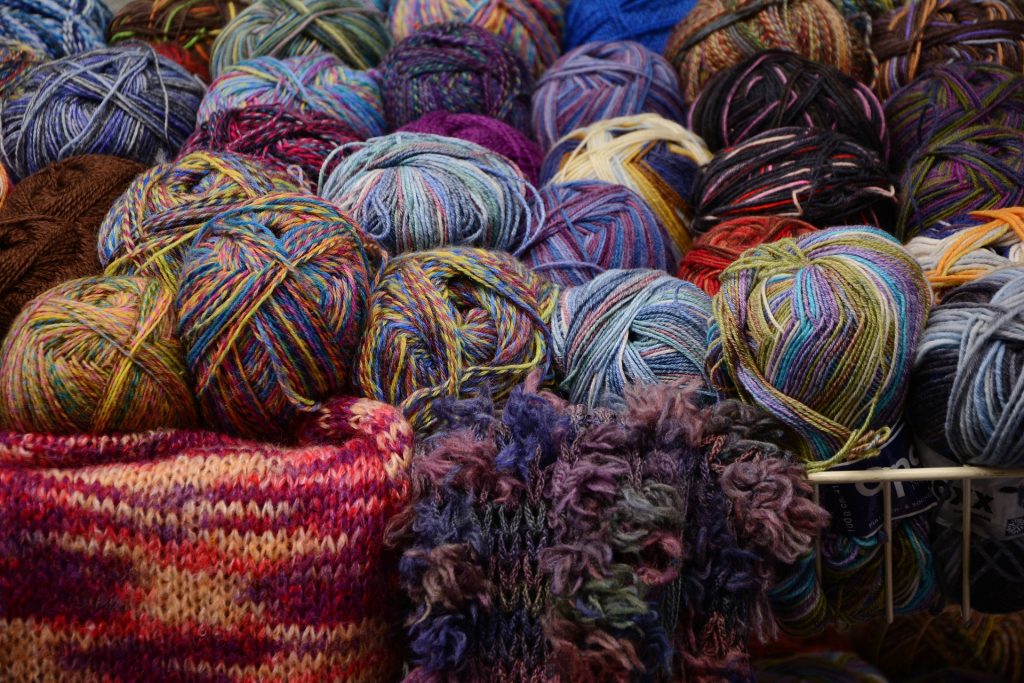Wool is one of the most widely used clothing fibers, being especially popular with winter garments. It is an animal based fiber, being made of the fleece of sheep or other animals. The reason why it is so popular is due to the fact that it is reasonably priced (the basic type at least), it has great insulating properties, it is water resistant, it wicks moisture, it breathes well, it adapts to different temperatures, it is highly durable and it is even odor resistant. Moreover, it is the preferred fabric for knitting projects, as it is easy to work with and it drapes well. However, there are different types of wool out there, and they all have unique properties. So, the next time you are shopping for a new wool yarn, consider whether or not it is the right type of wool for your project.
Basic Sheep Wool
This type of wool can be made from the fleece of any sheep. It can be rather coarse, so it is usually used for topcoats or for felt. As far as knitting projects go, basic sheep wool can be used for blankets and upholsteries. You can also find softer wool yarns, which are made of wool mixed with other fibers. The mixture makes the wool less coarse and itchy. These yarns can be used for sweaters and other winter garments.
Lambswool
This wool doesn’t come from a special breed of sheep, but it does come from lambs. In fact, it comes from the first shearing, from lambs that are no older than 7 months. The first shearing tends to produce a much softer and silkier wool. Lambswool is slightly more expensive than classic wool, but it is softer and it drapes better.
Merino Wool
This is by far the most luxurious type of wool. It comes from the fleece of Merino sheep. It is just as easy to work with as other types of wool, but it has a much softer and silkier texture. Moreover, it is the only wool that is resistant to pilling. It can be quite expensive, but it is worth it, if you want a nice garment. There are also some yarn manufacturers that produce top quality, yet reasonably priced merino wool yarns. Our top choice is Malabrigo Yarn, which is very soft and has unique colors, being 100 % hand-died. Malabrino yarn is perfect for any knitting, weaving or crocheting project.
Mohair Wool
This fiber comes from the fleece of the Angora goat, and it is a mixture of the goat’s topcoat and undercoat. The main disadvantages of mohair wool is due to this mixture, mohair tends to have a frizzy look, but it is rather soft and easy to work with. Moreover, it has great thermal properties, so unlike other wools, it also works for spring and summer clothes.
Angora Wool
This wool comes from the fur of the Angora rabbit, and it is completely different from Mohair, which comes from the Angora sheep. It is one of the softest and most expensive types of wool. The main disadvantage of angora wool is it’s expensiveness. It is so expensive due to the fact that its production is costly and time consuming. The Angora fur is very fine and it needs to be mixed with other fabrics for increased resilience. Moreover, the Angora rabbits need a lot of maintenance in order for their fur to be in top condition.
Cashmere
This is obtained from the cashmere goat, more specifically from the goat’s undercoat. The undercoat fleece is a lot softer and silkier. Cashmere is a rather luxurious fiber, and it tends to be quite expensive. However, its only advantage is the silky texture, as cashmere is quite delicate and it is not as resilient as other types of wool.
Alpaca Wool
Made from the fleece of Peruvian Alpacas, this luxurious fiber is very soft and silky. Its main advantage is that it is hypoallergenic. It is also warmer than other types of wool and it is not prickly. The main disadvantages of alpaca wool is it’s price. It is expensive than other wool.
Image source: https://pixabay.com/photo-2197757/
I’m a 20-something stay-at-home mother and wife. I have an amazing husband, a beautiful daughter, two loving dogs, and a lazy cat. I wouldn’t change my life for anything! I love to read, listen to music, cook and blog!


Speak Your Mind